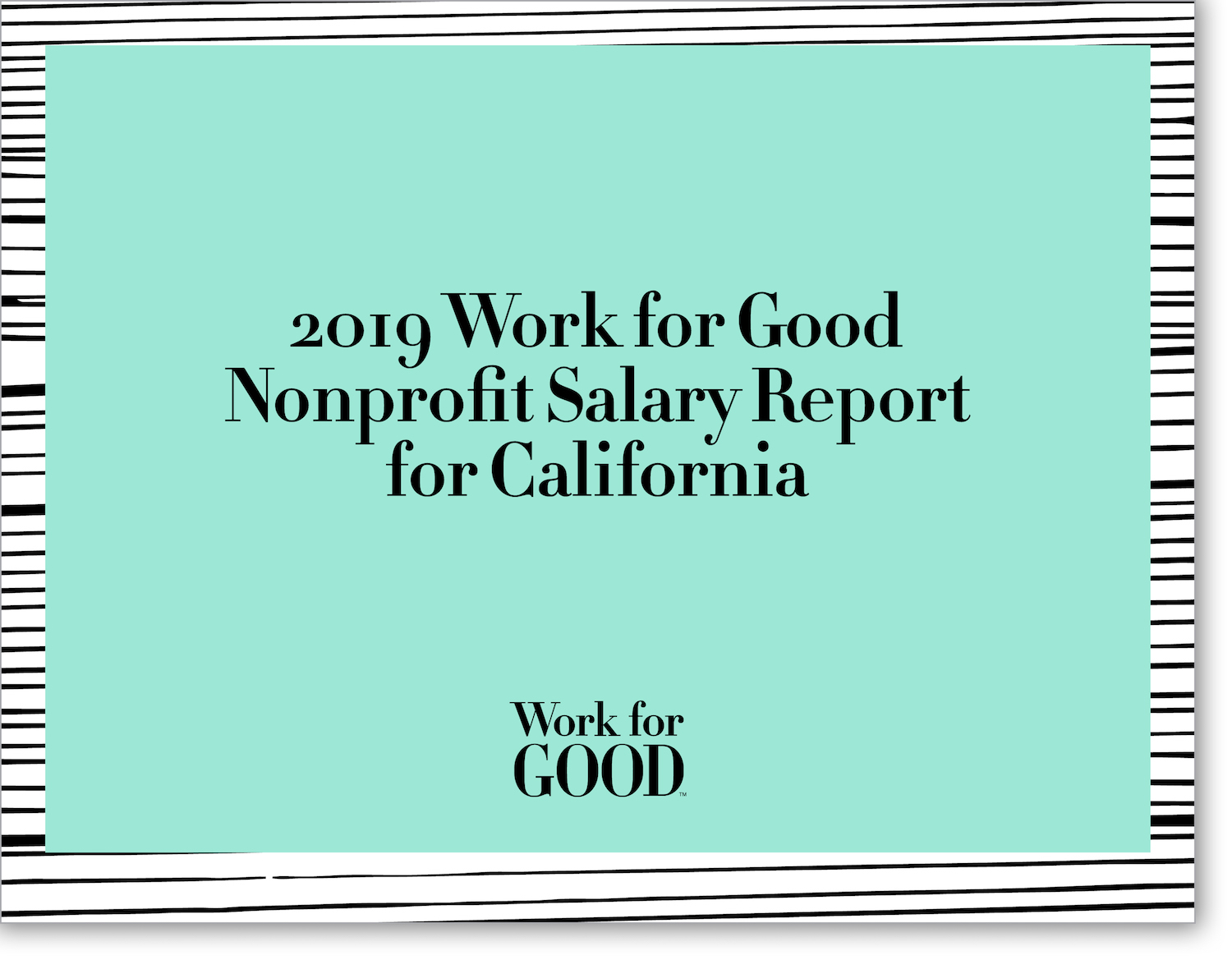
Are you familiar with the Accounting Standards Update (ASU) 2016-14 issued by FASB? It’s a standard created to offer solutions to simplify and improve how a nonprofit organization is able to classify its net assets, financial statements, liquidity, financial performance, and cash flows. Now, that organizations have begun to apply this new standard, they are encountering implementation issues that were not anticipated.
When organizations are gathering and preparing their financial information, they’re being faced with making difficult decisions on how to best present this information. For example, an analysis of expenses by function and natural classifications can be presented in multiple ways however, what is the most efficient and most beneficial method to do so?
Tammy Ricciardello states “Our advice on the presentation? Keep it simple. Yes, the analysis of expenses by function and nature should show the natural expenses of the entity by program and supporting activities, but this doesn’t mean that every type of expense should be presented on its own line. A straightforward approach will prevent the presentation from becoming overly complex and unwieldy.”
It’s important to remain focused on the information that is most useful and make sure that the one reading your financial statements can clearly understand the costs of each activity and where that activity is being allocated to. Remember, keep it simple.
To learn more about the best practices for implementing ASU 2016-14 functional expenses be sure to read the full article here.
Article provided by Tammy Ricciardella, CPA, Technical Director at BDO.

Did you know that certain nonprofits can legally opt out of paying state unemployment taxes? Do you understand who is benefiting from this tax exemption law? In this article, Jon Pratt, Executive Director at Minnesota Council of Nonprofits, discusses the benefits of nonprofit tax exemption and recent tax activity statistics.
It is important to understand that a tax-exempt status only exempts a nonprofit from paying tax on income that is generated from activities that are specifically related to the purpose for which the group was created. Nonprofits are not alone in benefiting from this exemption—by allowing more dollars to funnel back into the very missions that started nonprofit organizations—communities worldwide are reaping the benefits of endless services being offered by these 501(c)(3) organizations.
Jon Pratt explains, “Even though nonprofits are sometimes considered to be an essentially “tax-free” sector of the economy, they clearly have deep involvement on both sides of the ledger: as a tax expenditure, in the sense of forgone revenue, and as taxpayers and tax collectors, making substantial contributions to government revenues through tax collection from nonprofit employees and activities.”
To learn more about the national value of charitable nonprofit benefits and obligations, read the full article here.
Article provided by Jon Pratt, Executive Director at Minnesota Council of Nonprofits, Co-Director of GrantAdvisor and UST board member

Question:One of our employees has asked to bring her 16-year-old daughter to work so she can volunteer for school credits. Can we allow this?
Answer: It depends. Under the federal Fair Labor Standards Act (FLSA), employees may not volunteer services to for-profit private sector employers. However, private employers may have trainees or students in the workplace under the School-to-Work program (STW) or an internship program.
If you want to allow your employee’s daughter to do work for you as an intern, you will need to classify her as such. Keep in mind internships can be either paid or unpaid. The United States Department of Labor (DOL) uses six criteria to determine whether an internship is exempt from the minimum wage and overtime requirements of the FLSA (meaning the internship may be unpaid). Under the DOL test, for an intern to be exempt from the minimum wage and overtime requirements, all of the following must be true:
For more information on the DOL six-factor test, see Fact Sheet #71: Internship Programs Under the Fair Labor Standards Act. Note that the 2nd Circuit (Connecticut, New York, and Vermont) and the 11th Circuit (Alabama, Georgia, and Florida) do not use the DOL six-factor test but instead use the “primary beneficiary test.” Under the primary beneficiary test, a court determines whether the employer or worker benefits more from the internship. If the employer benefits more, the worker is properly classified as an “employee” and is entitled to minimum wage and overtime. If the individual benefits more, he or she is properly classified as an unpaid intern or trainee and exempted from the minimum wage and overtime requirements (nonemployees). As unpaid internships have proven to be a litigious area of employment law, seek legal guidance before electing to not pay an intern.
Finally, beyond these exceptions to the FLSA, if your employee’s minor 16-year-old daughter will be doing any work for the company not as an intern, she must obtain a work permit, must be paid at least the applicable minimum wage, and is entitled to the protections afforded other employees. You’ll also need to consider that each state has its own laws governing the employment of minors. Check here to review the laws applicable to your state.
Q&A provided by ThinkHR, powering the UST HR Workplace for nonprofit HR teams. Have HR questions? Sign your nonprofit up for a free 30-day trial here.

March resulted in positive job growth with employers adding an additional 196,000 jobs with considerable job gains in the healthcare and professional/technical services. Employment growth averaged 180,000 per month in the first quarter compared to the 223,000 per month in 2018 and this month the unemployment rate remained the same at 3.8 percent. The number of unemployed persons remained unchanged at 6.2 million.
During the month of March, the number of long-term unemployed (those jobless for 27 weeks or more) showed minimal to no change at 130 million and accounts for 21.1 percent of those unemployed. With the labor force participation rate at 63 percent, it showed slight change over the course of the month and little movement on net over the past 12 months. In addition, the number of persons employed part-time for economic reasons (referred to as involuntary part-time workers) showed small changes at 4.5 million in March. To explain, these are individuals who would have preferred to have full-time employment and were working part-time due to their hours being reduced or unable to find full-time employment.
Job gains occurred in health care adding 49,000 jobs and 398,000 over the past 12 months. This growth increased employment in ambulatory health care services (+27,000), hospitals (+14,000) and nursing/ residential care facilities (+9,000). In addition, there was a significate increase in the professional and technical services of 34,000 and 311,000 over the past 12 months. The growth increased employment in design and related services (+12,000), architectural engineering services (+6,000) and management and technical consulting services (+6,000). Employment also showed an upward trend in food services and drinking (+27,000) as well in construction (+16,000) with an increase of 246,000 over the past 12 months.
In March, average hourly earnings for all employees on private nonfarm payrolls increased by 4 cents to $27.70, following a 10-cent gain in February. Over the past 12 months, average hourly earnings have increased by 3.2 percent. Average hourly earnings of private-sector production and nonsupervisory employees increased by 6 cents to $23.24 in March.
With the revisions of both the January and February’s job reports, the number of jobs went from +311,000 to +312,000 for January and +20,000 to +30,000 for February – combined there were 14,000 more jobs than previously reported. These changes show a continual growth in employment and the upward trend of different sectors benefiting from this positive job growth.

Employing the third largest workforce with the third largest employee payroll, the nonprofit sector is quickly gaining momentum in the work arena. Work for Good recently released a new eBook, the 2019 Nonprofit Salary Report for California, based on results from an extensive survey of nonprofit professionals in the state. This eBook delivers comprehensive sector salary benchmarking based on nearly 10,000 positions at nonprofit organizations in the state of California. Those are impressive statistics and this report breaks down those numbers for you—helping in your quest for greater impact and organizational excellence. Download your copy today!

Question: We received a request from the State Department of Labor, Division of Research and Statistics, to provide information for “Occupational Employment Statistics Report in cooperation with the U.S. Department of Labor.” Is our participation mandatory or required?
Answer: Your state department of labor has asked you to participate in the Bureau of Labor Statistics (BLS) Current Employment Statistics survey. Providing information is voluntary under federal law and is mandatory under state law only in North Carolina, Oregon, and South Carolina.
The report is based on a sample of 390,000 business establishments nationwide. The survey produces monthly estimates of employment, hours, and earnings for the nation, states, and major metropolitan areas. Preliminary national estimates for a given reference month are typically published on the first Friday of the following month, in conjunction with data derived from a separate survey of households, the Current Population Survey. See the Bureau of Labor Statistics Current Population Survey page and the Current Employment Statistics page for more information.
Although voluntary in most states, employers are encouraged to complete and submit the report accordingly. No penalties exist for those who choose not to report in states where participation is not mandatory.
Q&A provided by ThinkHR, powering the UST HR Workplace for nonprofit HR teams. Have HR questions? Sign your nonprofit up for a free 30-day trial here.

From 2007 to 2016, the nonprofit sector experienced substantial growth in employment and a range of industries reaped the benefits of this growth. During this time, nonprofits surpassed the for-profit sector in employment growth with a 16.7 percent increase compared to the 4.6 percent increase in the for-profit sector. With consistent resilience and very little recognition for these efforts, nonprofits had the ability to employ nearly twice as many workers as construction, finance, insurance and transportation.
When looking at how nonprofit employment is distributed across a variety of industries, it can be helpful to see which industries benefited from this growth. Hospitals came in at the highest with 34 percent of the total, along with other health care sectors (e.g., nursing homes and health clinics) at another 21 percent. Next, is education with 14 percent of nonprofit employment then social services with 12 percent. An interesting point made in The 2019 Nonprofit Employment Report is “within the industries noted above, nonprofit workers tend to out-earn for-profit workers” and an example of this is, “an average nonprofit worker in ambulatory health earns $1,364 a week versus $1,101 for a person employed in the same industry by a for-profit firm. That is a 24 percent nonprofit wage advantage. In the social assistance sector, the nonprofit wage advantage is a stunning 55 percent.”
While nonprofits are less impacted by recessions than for-profit firms, they still face other obstacles that are unavoidable. For-profits continue to make advancements and are outpace nonprofits in a number of the traditional nonprofit sectors, such as nursing and residential care field, hospital field, social assistance; to name a few. For-profits also continue to grow in the private sector and while nonprofits are growing in the service(s) sectors, they are growing faster than the economy can accommodate.
With the nonprofit sector continuing to show resilience while battling with the many economic pressures and in constant competition with the for-profit sector, the nonprofit sector continues to push on. However, attention needs to be given to the many factors that impact the future of nonprofit business models.

Most people spend the majority of their weekday hours getting ready for work, commuting to and from work and actively working. As a standard rule of thumb, we make it a priority to ensure we live in a safe environment at home–free from negative energy. But what about our work environment? How can we ensure the environment is safe there as well?
Some typical issues encountered in the workplace that can be bothersome include poor lighting and fluctuating temperatures, but other issues that are surprisingly common that can seriously undermine employee health are workplace bullying and sexual harassment. These types of behavior can have an extremely negative impact on the well-being, productivity, and health of everyone in the office, not just those directly involved. Creating a safe work environment means focusing on culture and eliminating harmful behavior.
Many people think these negative behaviors stop once the graduation caps have been tossed in the air. Unfortunately, bullying is a common problem that can occur in any setting involving a large group of people, and the workplace is no exception. With digital tools like office chatrooms, texting, and email, there are more ways than ever for abusers to target others. Workplace harassment can encompass a number of harmful behaviors, including threats, humiliation, sabotage, and intimidation. It is this repeated harassment that can affect the victim’s ability to concentrate and/or feel safe at work.
One of the biggest problems with workplace harassment is that many people don’t recognize it when they see it. Not all harassment is obvious. Sometimes, it’s subtle and the effects build up over time. Alternatively, the abuser may be using digital tools that no one else can see rather than engaging in inappropriate behavior in front of others. In other cases, people that are witness to bullying may not feel safe coming forward. Research indicates that a shocking 37% of workers in the United States have been directly bullied in the workplace. When you factor in the people who witnesses bullying, the number reaches 49%. All in all, even if a person hasn’t been bullied on the job, chances are they know someone who has. Because of the negative consequences, these behaviors are a leading contributor of toxic work environments around the country.
Not only does workplace harassment cause victims to lose their confidence and experience increased stress, it can also lead to poor productivity, illness, and possibly, to the person quitting. A toxic culture increases turnover rates and can even open up companies to legal trouble if allowed to continue.
Workplace harassment is a serious issue and should therefore, be handled promptly. Not only can it lead to mental and physical health problems for your employees, it can also impact your bottom line and even hurt your reputation. Eliminating toxic behavior through education and awareness are key when it comes to ending workplace harassment of any kind and of the utmost importance in creating a safe and healthy work environment. Mandatory trainings for managers and employees, strict policies on harassment, and other safeguards can help ensure a safe and healthy environment for all.
This article was created in collaboration with Quinn Cooley of DC Scholarships.


As a nonprofit manager, it is important to be able to give constructive feedback effectively to your employees. Being able to share and receive feedback is vital to self- improvement. Examples of how to give constructive feedback include, discussing appropriate behaviors, asking questions, creating an action plan together and building trust, to name a few. On the other hand, there are a number of ways that your feedback could cause more harm than good.
Listed below are five bad habits your nonprofit organization should avoid when giving constructive feedback:
1) Waiting for the annual performance review to give feedback – This method can cause confusion and make things more challenging to work through. Waiting too long to provide feedback could make people feel caught off guard or defensive rather than being open to having a productive conversation.
2) Not providing specific examples – Concepts like “be more of a team player,” “be more professional” or “show more initiative” do not typically sink in without the use of specific examples to illustrate them. Labels without examples can leave people feeling at a loss of how to go about making changes because they are unsure of what you’re looking for. Make sure to be specific with your feedback.
3) Lack of preparation – Making an assessment or judgment call prior to gathering all the facts and examining the logic of your assessment, can lead to a very negative outcome. Situations like these could lead to resentment or loss of respect for the manager. Every statement you share, whether it be criticism or praise, should be backed up with specific details.
4) Making an assumption of how to praise an employee – A natural tactic is to praise an employee the same way you like to be praised. However, what may work for one type of person or personality may not have the same impact on another. This is one of the many areas of managing where learning personality types can be extremely useful.
5) Only giving corrective feedback without any positive feedback – If the only time you give feedback is to say something negative, employees will inevitably develop an automatic defensive reaction the moment you try to give them any type of feedback, whether it be positive or negative. Such conditions can be deemed hazardous for a constructive conversation and effect the overall culture of the workplace.
Some situations in life are just uncomfortable and performance reviews are often one of them. By planning ahead, these conversations can be extremely productive and used to strengthen employee-manager relationships while driving positive outcomes for the business. Set clear expectations, continuously monitor employee performance, regularly check-in, offer praise for good performance and continually work on staff development. You will be well on your way to creating a positive work environment where both parties are appreciated and respected.

UST maintains a secure site. This means that information we obtain from you in the process of enrolling is protected and cannot be viewed by others. Information about your agency is provided to our various service providers once you enroll in UST for the purpose of providing you with the best possible service. Your information will never be sold or rented to other entities that are not affiliated with UST. Agencies that are actively enrolled in UST are listed for review by other agencies, UST’s sponsors and potential participants, but no information specific to your agency can be reviewed by anyone not affiliated with UST and not otherwise engaged in providing services to you except as required by law or valid legal process.
Your use of this site and the provision of basic information constitute your consent for UST to use the information supplied.
UST may collect generic information about overall website traffic, and use other analytical information and tools to help us improve our website and provide the best possible information and service. As you browse UST’s website, cookies may also be placed on your computer so that we can better understand what information our visitors are most interested in, and to help direct you to other relevant information. These cookies do not collect personal information such as your name, email, postal address or phone number. To opt out of some of these cookies, click here. If you are a Twitter user, and prefer not to have Twitter ad content tailored to you, learn more here.
Further, our website may contain links to other sites. Anytime you connect to another website, their respective privacy policy will apply and UST is not responsible for the privacy practices of others.
This Privacy Policy and the Terms of Use for our site is subject to change.
UST maintains a secure site. This means that information we obtain from you in the process of enrolling is protected and cannot be viewed by others. Information about your agency is provided to our various service providers once you enroll in UST for the purpose of providing you with the best possible service. Your information will never be sold or rented to other entities that are not affiliated with UST. Agencies that are actively enrolled in UST are listed for review by other agencies, UST’s sponsors and potential participants, but no information specific to your agency can be reviewed by anyone not affiliated with UST and not otherwise engaged in providing services to you except as required by law or valid legal process.
Your use of this site and the provision of basic information constitute your consent for UST to use the information supplied.
UST may collect generic information about overall website traffic, and use other analytical information and tools to help us improve our website and provide the best possible information and service. As you browse UST’s website, cookies may also be placed on your computer so that we can better understand what information our visitors are most interested in, and to help direct you to other relevant information. These cookies do not collect personal information such as your name, email, postal address or phone number. To opt out of some of these cookies, click here. If you are a Twitter user, and prefer not to have Twitter ad content tailored to you, learn more here.
Further, our website may contain links to other sites. Anytime you connect to another website, their respective privacy policy will apply and UST is not responsible for the privacy practices of others.
This Privacy Policy and the Terms of Use for our site is subject to change.
Whether intentional, or unintentional, only 5 percent of those who were screened by Lexis Nexus Risk Solutions had ever been involved in any kind of criminal activity. But more than 1-in-5 of those who had a criminal background had been convicted of serious charges, including drug-related offenses, sexually-based crimes, kidnapping, and murder.
Nearly 1,200 nonprofit employees who were given background checks during the study had been convicted of murder. There were also 600 kidnapping offenses included in the audit.
Every year, Lexis Nexus combines forces with thousands of nonprofit agencies across the United States to conduct background checks and gather information designed to better protect nonprofit organizations in the event of a bad, or worse, accidental, criminal hire.
New EEOC Guidance May Soon Change This
In April, the U.S. Equal Employment Opportunities Commission approved new guidance on criminal background checks that requires all employers to individually assess whether an applicant’s past criminal conduct is job related or consistent with business necessity before throwing them out of the hiring pool.
For nonprofits who have encountered problems with employees whose criminal background prove not so distant, and for those who protect clients from criminals, the new rules will be jarring because the EEOC provides only 2 circumstances in which an employer can meet the “job related and consistent with business necessity” on a consistent basis. The first occurs when an employer is able to validate the criminal conduct screen for the position in question. This can only be done in accordance with the Uniform Guidelines on Employee Selection Procedures Standards if the data about the candidates’ criminal conduct, as related to their work performance, is available and can be validated.
The second, more time consuming and personal, option requires that a nonprofit employer must develop a targeted screen of all applicants considering the nature of their crimes, the time elapsed, and the nature of the job available. The employer must then provide applicants excluded by the screen the chance for an individual assessment to determine whether the policy, as-applied, is job related and consistent with business necessity.
The individual assessment would further require that the candidate is notified that they have been excluded from consideration because of a criminal conviction. According to the EEOC, the notice would have to include an opportunity for the screened candidate to demonstrate that the exclusion should not be applied based on the particulars of the candidates’ circumstances.
The employer must also consider their appeal with merit to the particular circumstances that are revealed during the consideration period.
What It All Means
Thankfully, the same study that found that only 5 percent of those employed by nonprofits have criminal backgrounds found that the number of nonprofit employees with criminal backgrounds has declined for five consecutive years, dropping from 7 percent in 2007 to 5.3 percent in both 2010 and 2011.
According to the study, which is called The Power of Positive Information, “The results… demonstrate that our background screening programs are working for nonprofits and underscore the importance of continued screening vigilance at nonprofits since nearly one-fourth of the records included in the audit were for serious offenses.”
More importantly, the study shares several best practices and program recommendations including:
To learn more about the study or how you can better improve the security of your nonprofit, visit http://www.lexisnexis.com/nonprofit for the full study.